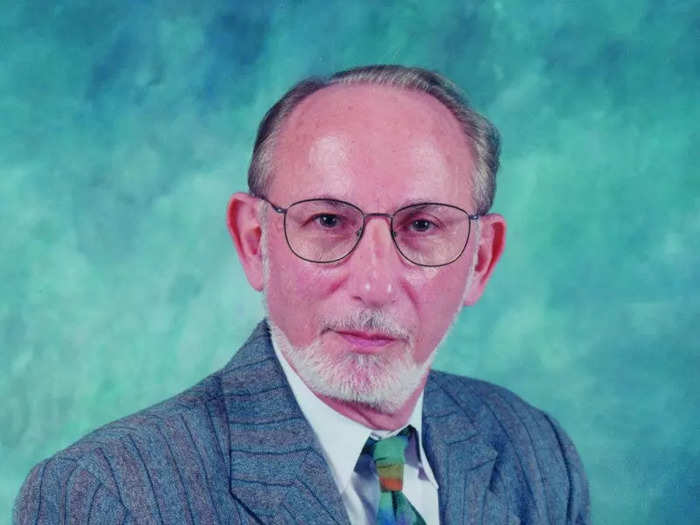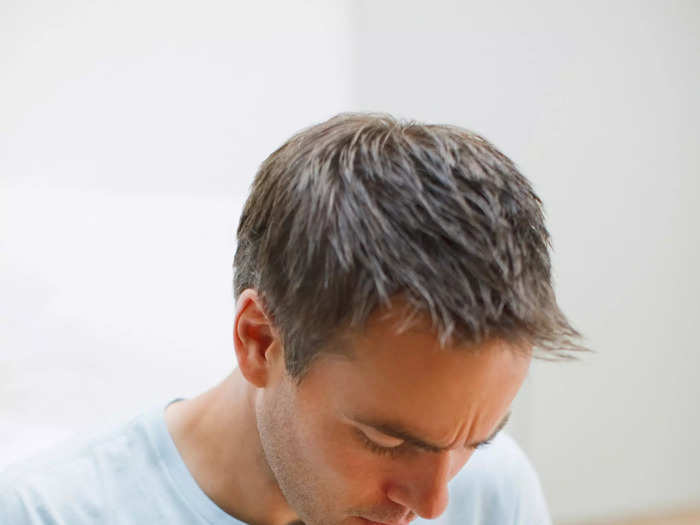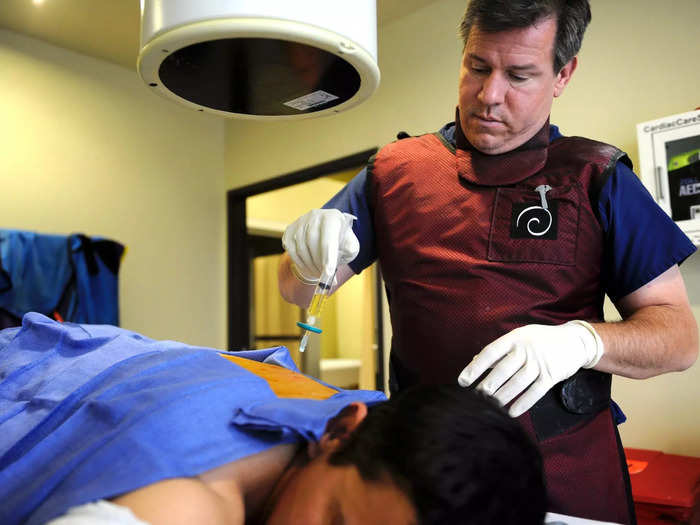The two best hair-loss treatments for male-pattern baldness that don't require surgery or implants are minoxidil and finasteride, doctors say.Getty Images; Alyssa Powell/Insider
- Male-pattern baldness is a complicated condition that no one totally understands.
- No single treatment works for everyone, but there are a few tried-and-true solutions.
- Minoxidil and finasteride work best. Experts say to be wary of expensive pills and flashy devices.
Some men lose hair; some don't — but the exact who, when, where, and why of men's hair loss is still a bit of a mystery to scientists.
Yes, part of what makes guys' formerly luscious locks thin and fall out is inherited, but our genes don't tell the whole story.
Other factors, such as hormonal changes from aging, are at play when some of the 500,000 hair follicles on your head begin to shut down and stop producing the complex, essential signaling molecules that make hair grow.
Insider spoke with three leading, independent hair-loss experts from across the US about the best ways to maintain and regrow thinning hair. All of them mentioned two tried-and-true medications that definitely help some patients and referenced a third (but pricier) technique that might be of use if you are losing some hair. Finally, they mentioned some more fringe treatments that may help some men but aren't as well researched.
Here are the best treatments on the market for men's hair loss.
Minoxidil
Guinter Kahn turned the blood-pressure drug minoxidil into the topical treatment we know as Rogaine. University of Nebraska at Omaha Alumni Association
Rogaine is a tried-and-true medication for hair growth that comes in both a liquid and a foam. You can also take the medication orally, and the low-dose pill version may be a better and cheaper way to treat hair loss.
The drug in Rogaine is called minoxidil, and it's a decades-old, cheap, and generic treatment for high blood pressure. In the late 1980s, Guinter Kahn, a dermatologist, figured out how to turn the drug into a topical cream that could be rubbed on the head twice a day to help cure male-pattern baldness.
Researchers estimate that about 30% to 40% of patients will achieve "significant" hair growth with Rogaine. The treatment enlarges thin hairs and makes a hair's growth phase last longer.
In recent years, doctors have been prescribing the more old-school minoxidil pills — at far lower doses than what's recommended to blood-pressure patients — to propel hair growth. They're getting better results than with the sticky head rubs, dermatologists say.
Minoxidil "works for just about everybody that takes it," Dr. Arash Mostaghimi, a dermatologist and hair researcher at Harvard and Brigham and Women's Hospital, told Insider. "They will get some degree of hair growth."
Side effects and downsides of taking oral minoxidil can include: Chest pain and other heart issues, as well as thicker, darker hair growth everywhere on your body. You must also keep using the drug to continue seeing results.
Finasteride
Getty Images
The drug finasteride is the other tried-and-true treatment many doctors recommend. But it comes with the potential for undesirable side effects some folks don't want to risk.
Finasteride, better known by its brand name Propecia, is a prostate medication that can also work to control and prevent male-pattern baldness by blocking the effects of certain hormones on a man's hair follicles. It usually takes about six months to see results, and you have to keep using the drug to maintain results.
But blocking those hormones can also decrease a man's sex drive, increase his breast size, and contribute to erectile dysfunction. Doctors told Insider their younger patients experiencing hair loss overwhelmingly preferred oral minoxidil. That's because while it can cause heart issues, there are no sexual side effects associated with that drug.
There is also a stronger, finasteride-like prostate drug called dutasteride, which may work even better and which some doctors prescribe off label.
"Dutasteride has very limited data for hair," Mostaghimi said. "But intellectually, it makes sense that it would probably work better."
Theoretically, this means the possibility for sexual side effects with dutasteride may also be greater than with Propecia.
"There are probably reasons for why it's not FDA-approved" for hair loss, Maksim Plikus, a hair scientist from the University of California, Irvine, told Insider. "It could be that it's a little bit too potent."
Platelet-rich-plasma therapy
Platelet-rich plasma can be used for hair loss. It's also injected to help with conditions such as arthritis. Joe Amon/The Denver Post via Getty Images
It's not as well researched or established as minoxidil or finasteride, but there's a cutting-edge strategy you can try to improve hair loss called platelet-rich plasma therapy.
The technique requires patients to get their blood drawn, then spun in a centrifuge to extract platelets — a special kind of cell in our blood that's critical for clotting and wound healing. Then, those special cells are reinjected into a person's scalp to promote hair growth.
"It kind of falls into this gray area of medical treatment," Plikus said. "The idea is that upon injection, those platelets release signaling molecules, some of which could be inducing hair to grow."
The Food and Drug Administration doesn't regulate the treatments, and there's no commonly agreed-upon statistics about how well they work.
But "there's a lot of people who swear by it, both on the physician and on the patient end," Mostaghimi said, adding: "There are some pictures out there that are floating around of people who've had pretty substantial responses."
The downsides are: Just like Rogaine and Propecia, you have to keep doing the therapy to continue seeing results in your hair. That can get pretty pricey over time since each treatment costs several hundred dollars, and it's not typically covered by insurance. Also, the procedure can be a little painful.
Red-light therapy, microneedling, and hair vitamins are less studied but might work
Cathy Scola/Getty Images
There are many kinds of red-light combs and caps you can buy on the internet that promise to regrow your hair, with prices ranging from a few dollars to thousands. They might work, but nobody really has any idea about which wavelength is best, and there's no way to know which brands are legit, if any.
"The companies that make these things really should fund very rigorous studies to show how efficacious their products are," Luis Garza, a dermatology professor from the Johns Hopkins University School of Medicine, told Insider. "But, of course, they're nervous because they can still make money without showing."
There's also scant evidence that some brands of hair vitamins, such as Viviscal or Nutrafol, can work for some folks.
"In the same category as the hair laser comb is the hair vitamins," Garza said. "There's just small amounts of evidence that maybe they work in some people."
Some do-it-yourself hair growers also try combining different hair-regrowing methods, including microneedling their scalp — a process that uses thin needles to stimulate the skin — and applying Rogaine.
But experts agreed you should try the cheap, well-researched medications such as minoxidil and finasteride before embarking on any internet searches for new devices or supplements. In the end, all these strategies are temporary fixes for hormonal hair loss, anyway.
"I know you're trying to stay away from surgical stuff," Garza said. "But I do tell patients, look: I'm not a hair surgeon, but I do think it's maybe the best — because you just do it, and you're done."




